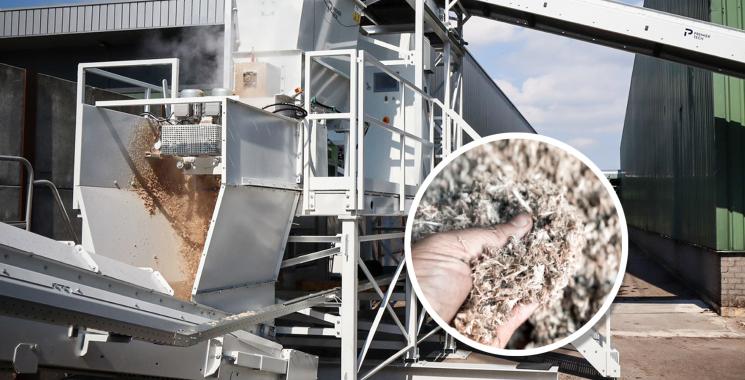From the National Executive Officer - February 2021
AUSTRALIAN ORGANICS RECYCLERS READY TO STEP UP
Organic recycling is important for many reasons. Organics comprise about half of our national waste stream. If we get organics recycling right, we have a good chance to meet our national and state objectives for waste reduction and recycling, landfill reduction, and carbon reduction. If we don’t, we won’t.
For AORA, the national voice of the organics recycling industry, COVID-19 was a big opportunity. It gave us time and capacity to reposition AORA and the industry for a future with greater national collaboration and significant growth.
The visible evidence of this change is in four foundational documents:
- New AORA Strategic Plan 2020-23 (commenced July 2020)
- The Economic Contribution of the Australian Organics Recycling Industry (launched March 2020)
- The Capacity of the Australian Organics Recycling Industry (launched January 2021)
- 10-year National Industry Strategy (launching this week).
The Economic Contribution of the Australian Organics Recycling Industry
Our industry contribution study last year showed that Australia produced 14.6 million tonnes of organic waste of which 5.6 million tonnes went to landfill; 7.5 million tonnes were recycled at an overall national organic recycling rate of 51.5%. South Australia has the highest organics material recycling rate at 78.9%.
The industry provides 4,845 jobs to Australian residents, paying over $366 million in wages and salaries; the average wage of each employee is $75,540. The industry has a collective turnover above $2 billion; supply chain value over $1.9 billion; and $724 million in industry direct value add to the economy each year.
The industry’s environmental contribution is just as significant. Greenhouse gas savings from organics recycling tops 3.8 million tonnes of CO2 annually: equivalent to planting 5.7 million trees or taking 876,663 cars off the road.
And that just what the industry is already doing. What if we stepped up our national recycling rate of organics to 95%?
The results would be 4,094 more jobs; $309 million more in wages; and an extra $612 million in industry direct value add to the economy every year. At the same time, we’d remove an additional 3.2 million tonnes of CO2 annually: equivalent to planting 4.8 million trees or taking 741,524 cars off the road.
And that’s without including the benefits of the industry’s products to agricultural productivity and soil quality, drought proofing, and reduction of chemicals and pesticides in agriculture.
To realise these enormous economic and environmental benefits we need only two factors:
- The right policy settings from governments; and
- Industry capacity to take up the opportunities.
Of course, neither of these is a given, which is why we recently launched our second industry study.
The Capacity of the Australian Organics Recycling Industry
This report was launched to AORA members over the last several weeks. It provides an independent and robust assessment of the industry’s ability to step up as an economic, employment and environmental provider of benefit.
The performance of the industry, in line with recycling rates, varies greatly across different states and territories. However, there remain significant obstacles to the growth of the industry in every jurisdiction.
The largest of these obstacles includes regulatory policy uncertainty; contamination of input material; Government policy (such as waste and recycling strategies); business licensing and operating permits; development applications (time, cost and politicisation); Government procurement failing to support organic recycling products; and short council contract periods.
Internal issues such as access to technology, labour costs, logistics and access to finance are relatively minor obstacles to growth.
Put simply, the major obstacles to growth – the biggest roadblocks to achieving the economic and environmental benefits available – are external to the industry and within the control of one or more tiers of government. The benefits on offer will not be realised without a much closer and more collaborative relationship between governments and the industry.
That’s why our upcoming 10-year National Industry Strategy is so important.
2030 Vision: Australia’s World Leading Organics Recycling Industry of 2030 and How to Get There
Our third foundational document outlines a 10-year strategy for the Australian Organics Recycling Industry – a roadmap designed to take the industry from a solid existing base to recognition as a world leader in the recycling of organics waste streams, for its innovative and efficient processing into desirable products, and for the relevance, quality, and economic and environmental value of these products.
This Strategy will answer the two key questions:
- How do we get to 80% recycling of organics by 2025 and 95% by 2030?
- How do we remove the obstacles?
Join us online on Wednesday our Annual Members Forum to find out more about the National Industry Strategy.
If you cannot make that, keep an eye out for our member webinars which will introduce the Strategy and give you the opportunity to ask questions of me or the AORA Board.
The future is here!
Peter Olah
National Executive Officer
